Potřebujeme váš souhlas k využití jednotlivých dat, aby se vám mimo jiné mohly ukazovat informace týkající se vašich zájmů. Souhlas udělíte kliknutím na tlačítko „OK“.
ASTM E1948-98(2014)
Standard Guide for Analytical Data Interchange Protocol for Chromatographic Data
Automaticky přeložený název:
Standardní příručka pro analytické údaje Interchange Protocol chromatografických dat
NORMA vydána dne 1.8.2014
Informace o normě:
Označení normy: ASTM E1948-98(2014)
Poznámka: NEPLATNÁ
Datum vydání normy: 1.8.2014
Kód zboží: NS-43695
Počet stran: 8
Přibližná hmotnost: 24 g (0.05 liber)
Země: Americká technická norma
Kategorie: Technické normy ASTM
Kategorie - podobné normy:
Anotace textu normy ASTM E1948-98(2014) :
Keywords:
analytical, chromatographic data, data, data communications, good laboratory practices, method, netCDF, raw data, results, ICS Number Code 35.240.99 (IT applications in other fields)
Doplňující informace
| Significance and Use | ||||||||||||
|
6.1 General Coding Guidelines—The NetCDF libraries are supplied to developers as source code. End users receive the libraries in compiled binary form as part of a vendor's application. 6.1.1 Some vendors found that compilation using the huge memory model under Microsoft Windows on MS-DOS was needed because of an array pointer passing its boundary. Many vendors chose to write a conversion program as a stand-alone DOS application, whereby the conversion program used only text-mode screen I/O. Some vendors are now using it in their MS-Windows applications. 6.1.2 Developers setting out to write a program to convert their data files to the Chromatographic Data Protocol should use the NetCDF utilities ncgen and ncdump. Applying the ncgen utility to the CHROMSTD.CDL template will generate the skeletal code needed to create the NetCDF file. The programmer can then modify the code to create a program that reads the netDCF file from another vendor. After developers create the NetCDF file they should use the ncdump program to generate the ASCII representation of the data files, and examine it to ensure the data is being correctly put into the file. 6.2 Make Files for NetCDF Libraries and Utilities—In general the compilation is straightforward. The make files were modified after they were received from the Unidata Corporation, because they did not compile the first time on PCs. The changes needed to get the Unidata distribution to run on DOS are (1) rename the file MAKEFILE to UNIX.MK, and (6.2.1 The protocol contain some complete makefile examples for Microsoft C V6.0 running on DOS. The Microsoft C V6.0 compiler manual should be consulted for the exact meaning of the compiler and linker options. 6.2.2 The VMS and SunOS compilation instructions are in directories for those operating systems. 6.3 NetCDF Library Build Order—The NetCDF libraries must be built in a specific order. The correct order to build the NetCDF directories is:
6.3.1 The UTIL and XDR makefiles work as distributed using NMAKE with Microsoft C V6.0. |
||||||||||||
| 1. Scope | ||||||||||||
|
1.1 This guide covers the implementation of the Chromatographic Data Protocol in analytical software applications. Implementation of this protocol requires: 1.1.1 Specification E1947, which contains the full set of data definitions. The chromatographic data protocol is not based upon any specific implementation; it is designed to be independent of any particular implementation, so that implementations can change as technology evolves. The protocol is implemented in stages, to speed its acceptance through actual use. 1.1.2 Specification E1947 contains a full description of the contents of the data communications protocol, including the analytical information categories with data elements and their attributes for most aspects of chromatographic tests. 1.2 The Analytical Information Categories are a practical convenience for breaking down the standardization process into smaller, more manageable pieces. It is easier for developers to build consensus and produce working systems based on smaller information sets, without the burden and complexity of the hundreds of data elements contained in all the categories. The categories also assist vendors and end users in using the guide in their computing environments. 1.3 The NetCDF Data Interchange System is the container used to communicate data between applications in a way that is independent of both computer architectures and end-user applications. In essence, it is a special type of application designed for data interchange. 1.4 The Common Data Language (CDL) Template for Chromatography is a language specification of the chromatography dataset being interchanged. With the use of the NetCDF utilities, this human-readable template can be used to generate an equivalent binary file and the software subroutine calls needed for input and output of data in analytical applications. |
||||||||||||
| 2. Referenced Documents | ||||||||||||
|
Podobné normy:
Historická
1.8.2014
Historická
1.11.2010
Historická
1.11.2010
Historická
1.7.2012
Historická
1.11.2011
Historická
1.3.2014


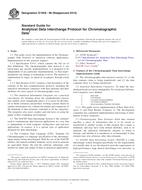
 ASTM E1947-98(2014)..
ASTM E1947-98(2014)..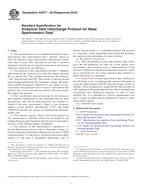 ASTM E2077-00(2010)..
ASTM E2077-00(2010)..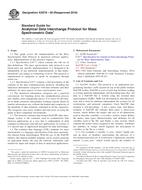 ASTM E2078-00(2010)..
ASTM E2078-00(2010)..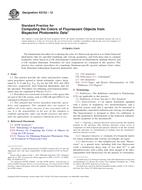 ASTM E2152-12
ASTM E2152-12 ASTM E2153-01(2011)..
ASTM E2153-01(2011)..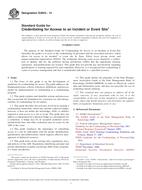 ASTM E2842-14
ASTM E2842-14
 Cookies
Cookies
